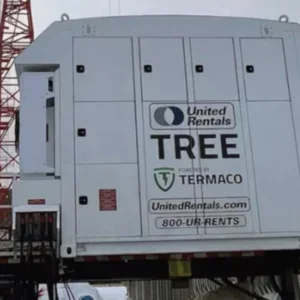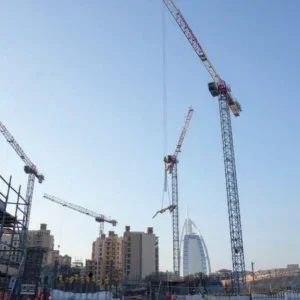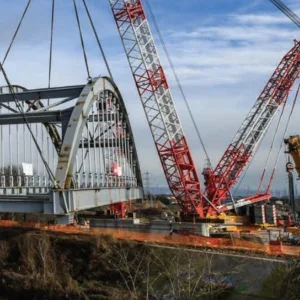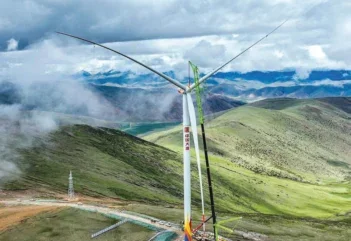
Over the past 40 years, China’s tower crane rental industry has evolved from being dominated by large state-owned enterprises to a more diversified market with a predominant presence of private enterprises. The business models have also diversified from single operating leases to include financial leasing, leveraged leasing, subleasing, and sale-leaseback arrangements. With advancements in mobile technology and the growth of the prefabricated building market, the tower crane rental industry is expected to further upgrade and develop, with online and mobile rental platforms injecting new vitality into the market.
Today, some major tower crane rental companies in China have emerged as leaders, and the first publicly listed tower crane rental companies have appeared and are gradually dominating the market. However, overall, the industry is still in its early stages of development, with a market penetration rate lower than that of developed countries. The market is characterised by a large number of small enterprises and few largescale enterprises, resulting in a low market concentration.
Only one tower crane rental company has annual rental revenue exceeding 1 billion yuan, and fewer than ten companies exceed 100 million yuan. There are two listed companies: Pangyuan Leasing, which was reorganised by Shaanxi Construction Machinery Co., Ltd. (stock code 600984), and Zizhu Hui (stock code 834243), which is listed on the New Third Board. Most business activities are domestic, with only a few companies involved in international markets, resulting in a significant gap compared to the billions of dollars in revenue seen in large rental enterprises in developed countries.
MARKET SIZE
The development of the tower crane rental market is heavily influenced by the construction and real estate industries.
Recent years have seen active investment from the Chinese government to boost the domestic economy, significantly driving the growth of the construction and real estate industries and providing rare opportunities for the tower crane rental sector. However, since 2021, the rental industry has experienced a cyclical downturn, with rapid declines in equipment rental prices and a decrease in business volume.
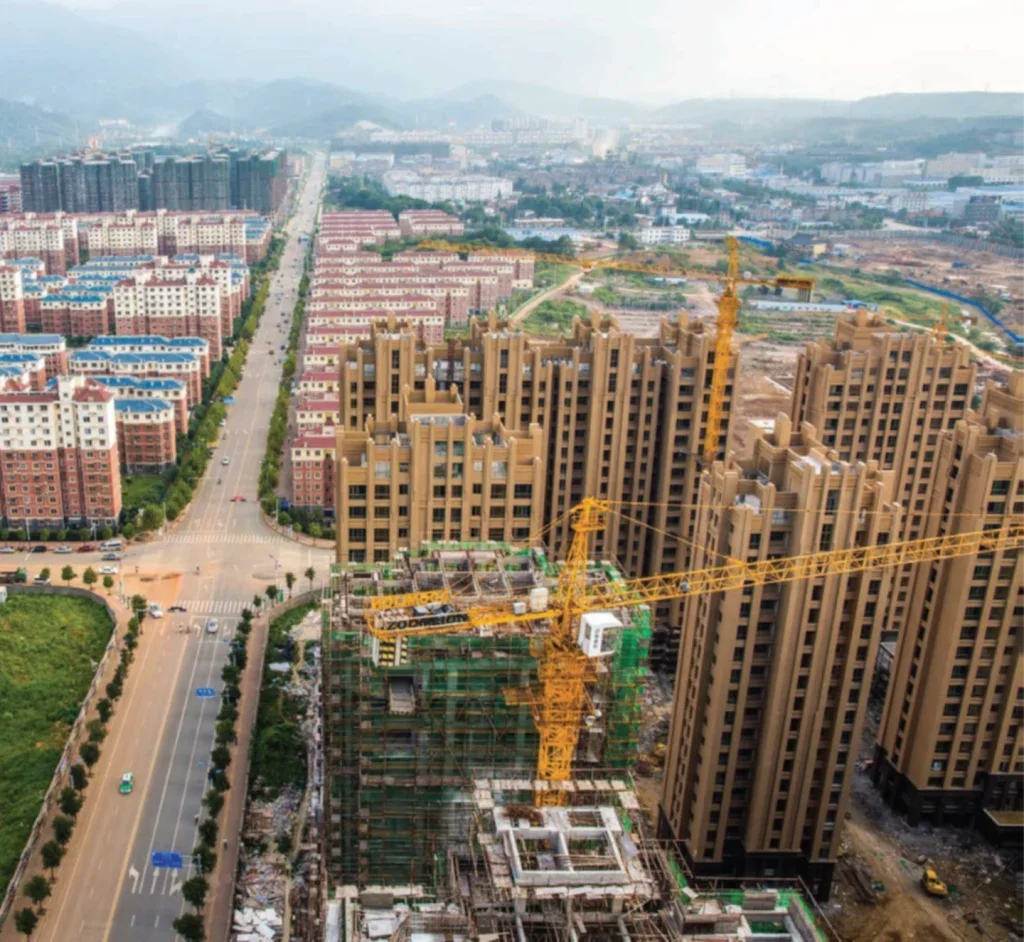
According to statistics from the China Construction Mechanization Branch of CCMA, the Tower Crane Rental Industry Prosperity Index (TPI) for 2023 decreased by 25.9% year-on-year, and the total new orders for the year fell by 14.5% compared to the previous year.
The decline in funds available to real estate developers has worsened payment conditions for construction units, with overdue payments becoming commonplace. Many small and medium-sized rental companies are struggling to maintain operations.
Data shows that in 2006, China’s tower crane rental business revenue was 14.277 billion yuan. By 2011, the industry market size had reached 34.176 billion yuan, with a compound annual growth rate of 19.07% from 2006 to 2011.
By 2015, the market size had surged to about 75 billion yuan, making it the third-largest equipment rental market after excavators and loaders, with an annual growth rate of approximately 20%. In 2021, the market size was around 117.1 billion yuan. However, in 2022, the market size fell by about 20% to approximately 95 billion yuan, and in 2023, it was about 85 billion yuan.
In the Chinese tower crane rental market the main competitors fall into four categories:
- Large private tower crane rental companies: These companies operate in a market-driven manner, have high brand recognition, strong market competitiveness, large equipment scales, high management levels, and strong technical capabilities. Representative companies include Pangyuan Leasing (reorganized by Shaanxi Construction Machinery Co., Ltd.), Zizhu Hui, and Beijing Zhenghe.
- Joint ventures with foreign and domestic companies: These are specialised rental companies formed through joint ventures between foreign crane rental companies and domestic firms. They have high starting points, experience from both domestic and international operations, and advanced, rapidly updated equipment. Representative companies include China Nuclear Huanxing Dafeng and Jiangsu Zhongjian Dafeng.
- State-owned construction enterprise tower crane rental companies: These companies are developed based on equipment management agencies of former stateowned enterprises, with large equipment scales, good management foundations, high technical levels, and standardized services. Representative companies include China Power Construction Group Leasing Co., Ltd.
- Other companies involved in tower crane rental: These are smaller rental companies with fewer equipment and lower management levels, resulting in weaker market competitiveness.
The tower crane rental service market in China is extremely fragmented. Pangyuan Leasing, as a leading company, has only 2.7% market share (in 2019), and there is a significant gap between it and other companies. In market competition, companies with high qualifications, strong professional capabilities, and rich project experience have a clear competitive advantage. Especially in the medium and large tower crane rental market, where higher qualifications, professional service capabilities, safety management abilities, and financial strength are required, competition is mainly among large, comprehensive rental companies, making it difficult for small and medium-sized companies to enter.
Additionally, the size of the rental company directly impacts its procurement prices and payment methods. Large rental companies have procurement scale advantages and bargaining power with upstream manufacturers, often resulting in lower procurement prices compared to smaller companies and more diversified payment methods.
PREFABRICATED BUILDING WINDOW OF OPPORTUNITY
In recent years, China has vigorously developed prefabricated buildings. The core of prefabricated buildings lies in the pre-manufacturing of construction components, whether concrete, steel, or wood, which requires heavier lifting equipment.
This has provided new development opportunities for the tower crane rental market. Meanwhile, the recent market performance confirms this viewpoint. In 2015, the tower crane rental rate in China was only 50%-55%. Since 2016, the rental rate has risen year-on-year, and from 2017 to 2018, it remained high, especially for medium and large tower cranes suitable for prefabricated buildings, where demand has significantly outstripped supply.
Rental prices have also risen noticeably, particularly for medium and large tower cranes, with prices increasing by 10%-30%.
The rise of prefabricated buildings has not only greatly expanded the structural growth space of the industry but also driven equipment upgrades. Based on international experience and leading regions in China such as Shanghai, as the prefabricated building rate and component integration increase, the industry’s demand for tower crane capacity will gradually shift from smaller to larger sizes.
Currently, mainstream prefabricated building tower cranes in China range from 100 to 300 ton-meters. In Shanghai, the leading region for prefabricated buildings, tower crane capacities have reached around 350 tonmeters, while in Singapore, mainstream capacities are 400-600 ton-meters, with trends toward 600-1000 ton-meters. Based on development experiences from leading domestic regions and international mature industries, the trend toward larger tower crane capacities is inevitable with the increase in prefabricated buildings.
In Beijing, the main models for prefabricated buildings are 315- 400 ton-metres. It is estimated that over the next decade, the prefabricated building sector could add 30-50 billion yuan in demand for medium and large tower crane rentals, representing an increase of over 50% from the current market size.
INTERNET + RENTAL
The first engagement of Chinese tower crane rental companies with the internet typically involved setting up their own official websites, followed by social media marketing through Weibo, WeChat, and micro-sites, and then expanding to e-commerce platforms, the Internet of Things (IoT), big data, and cloud operation systems.
Leveraging wireless networks and the internet enables intelligent identification, tracking, monitoring, and management of equipment, facilitating remote, dynamic, and all-weather connectivity between equipment, operators, technical service engineers, and company headquarters, leading to service upgrades.

In July 2011, China’s first self-service tower crane rental e-commerce platform, “Tower Crane 365,” was launched by China Nuclear Huanxing Dafeng Mechanical Engineering Co., Ltd.
This platform aims to address the inefficiencies and high costs of traditional rental service models by providing safe, reliable, transparent, and efficient modern services.
In December 2012, Beijing Zhenghe established China’s first enterprise “Tower Crane Safety Remote Monitoring Platform”. This platform collects and analyses tower crane work data, monitor data in real-time, and offer functions like GPS positioning, video surveillance, obstacle avoidance, and overload alarms.
In January 2018, Pangyuan Leasing pioneered the Pangyuan Index, reflecting the price fluctuations in the domestic tower crane market, and it is regularly published.
This index, based on dynamic weights and market feedback, provides a visual representation of tower crane rental prices, offering reference and guidance for bidding quotes. In its 2017 report, Zizhu Hui also incorporated the internet model into its future strategy, using internet thinking and financial methods to advance information and intelligence, positioning itself as a “vertical transportation service provider + financial leasing business + second-hand equipment trading service provider.”
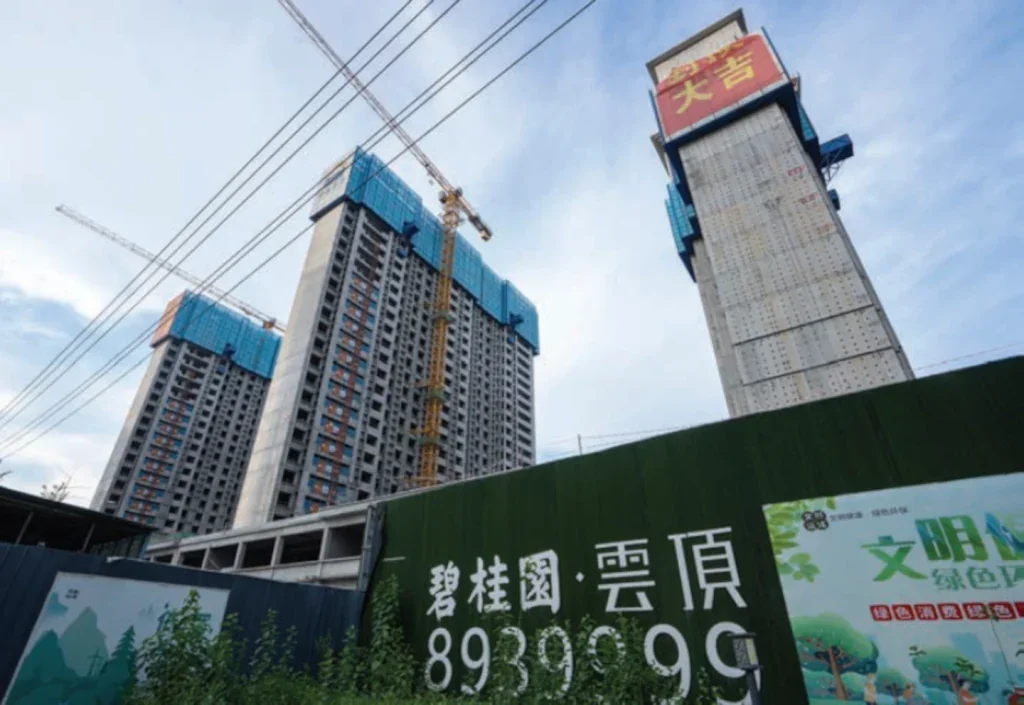
However, compared to the rapid response of leading companies to internet trends, many small tower crane rental companies have not prioritised internet development, largely due to their limited capacity, undertaking ability, and innovation capability. For tower crane rental companies, core competitiveness lies in service. Thus, in the internet era, seizing the opportunities of mobile internet development and leveraging interconnected and information technology, while deeply understanding customer needs and responding to market changes, is crucial. Ensuring safety and adhering to the commercial essence of products and services, transitioning towards automation, information technology, and intelligence, are essential for the development of these enterprises.
DEVELOPMENT BOTTLENECKS
Currently, the Chinese tower crane rental industry faces several prominent issues:
- Low management standards and unregulated equipment management: The complexity of construction work is increasing, and the installation, operation, and dismantling of tower cranes are facing greater challenges. Many tower crane rental companies provide leasing services while subcontracting construction work to operators without proper safety production permits. Many rental companies lack skilled operators and technicians, leading to frequent accidents involving tower cranes during operation, erection, attachment, lifting, and dismantling. Additionally, to maximise profits, some rental companies cut essential costs, such as those for parts, safety management, and labour, creating safety hazards.
- Disorderly and homogeneous competition: The tower crane rental industry in China operates in a fully competitive market with low barriers to entry. There are many small enterprises with generally low management standards and weak rental service and technical capabilities. These companies often lack accurate market positioning and effective safety management systems and blindly follow projects. Price competition is intense, leading to extremely low profit margins and adversely affecting investment in safety management and talent acquisition, which severely hinders the healthy and steady development of the industry.
- Difficulties in rent collection: The biggest challenge for tower crane rental companies is collecting rent. Policies and regulations are relatively outdated and inadequate, and there is a lack of a credit system and legal constraints on overdue rental payments, contributing to severe payment arrears. Additionally, many rental companies also face issues with delayed payments to manufacturers, which disrupts the debt chain and constrains the healthy development of the rental market.
- Talent shortage: The rental industry is knowledge-intensive, involving expertise in finance, taxation, and law. With the booming development of the rental industry, the shortage of talent has become increasingly evident. Rental company operators generally lack high qualifications and require extensive training and practical experience to become proficient.
Reflecting on the issues within China’s tower crane rental industry, it is clear that some problems can be resolved by the industry itself, while others require joint efforts from the industry, society, and government. For instance, issues related to credit, laws, and regulation need comprehensive approaches. Over the years, Chinese government departments have issued several documents aimed at regulating market order, ensuring project quality and safety, and strengthening market supervision. Meanwhile, industry associations have been working to effectively supervise the industry.
TRENDS IN CONSOLIDATION
Currently, the Chinese tower crane rental industry has vast market potential but is highly fragmented. As early as 2014, Philippe Cohe, Vice Chairman of Arcomet Group, the largest rental company in Europe, predicted that consolidation would be an inevitable trend for small tower crane rental enterprises in China.
This view is shared by many industry insiders.
Industry experts predict that consolidation will occur on three levels:
- Nationally operative companies: Companies targeting medium and large tower cranes and high-end construction markets will consolidate their business operations.
- Regional and small-to-medium crane companies: Rental companies focusing on smaller cranes and regional markets will consolidate their business.
- Specialised rental companies: Companies specialising in specific sectors or markets will also undergo consolidation.
The market needs large rental companies that can form sizable, scientifically managed, technologically advanced, geographically extensive, and professionally capable mechanical rental groups through mergers, restructuring, and capital involvement. These companies are expected to become the backbone of the market. Currently, the industry is actively consolidating around leading players, with leading companies’ market share steadily increasing. As rental companies consolidate and expand their scale, their business scope is extending from regional to nationwide, leading to greater uniformity in local markets. According to Chai Zhao Yi, Executive Director of Pangyuan Rental, the number of tower crane rental companies in China is expected to decrease to around 4,000 by 2024, and by 2025, the average revenue scale of active rental companies may reach 30 million RMB per year.
Whether through “strongstrong alliances” or “strongweak mergers,” companies are increasingly seeking survival strategies that suit their needs. By leveraging their advantages through restructuring and integration, they aim to enhance their competitive strength and share a larger market space and industry benefits.
ZOOMLION IN THE LIMELIGHT
Zoomlion cranes have been utilised for a range of recent high-profile lifts in Tibet and China. Zoomlion all terrain cranes were used to lift 116 tonne components for the world’s highest-altitude wind power project, the Baisku wind project, in Tibet (top), while a 3,200-tonne Zoomlion crawler crane was used to lift the outer dome of Changjiang Nuclear Power Unit 3 (bottom). The dome weighed 600-tonnes.
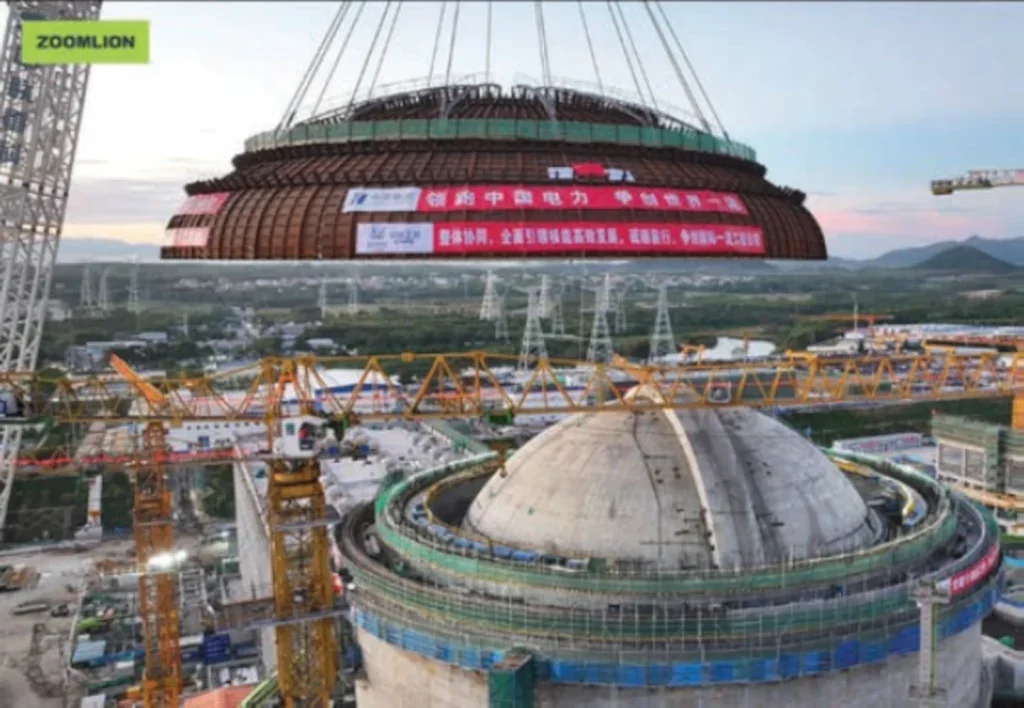
SANY CRANES IN CANADA AS INTERNATIONAL EXPANSION PLAN PROGRESSES
Sany America has announced it is partnering with Leduc, Alberta, Canada-based crane and equipment dealer North West Crane Enterprises. This means Sany cranes are now available in Alberta and British Columbia. North West Crane Enterprises stocks a range of equipment including from XCMG.

In September Xiang Wenbo, chairman of Sany Group, said the company’s latest semi-annual financial results demonstrated its progress in globalisation which, it said, shows its main business has achieved international sales revenue of 23.54 billion yuan (3.31 billion USD), reflecting a year-on-year increase of 4.79 percent and accounting for 62.23 percent of its main business revenue.
In the strategy of globalisation, Sany says, it aims to ‘transform product exports into industrial exports’, positioning its sources, including R&D and manufacturing, globally.



